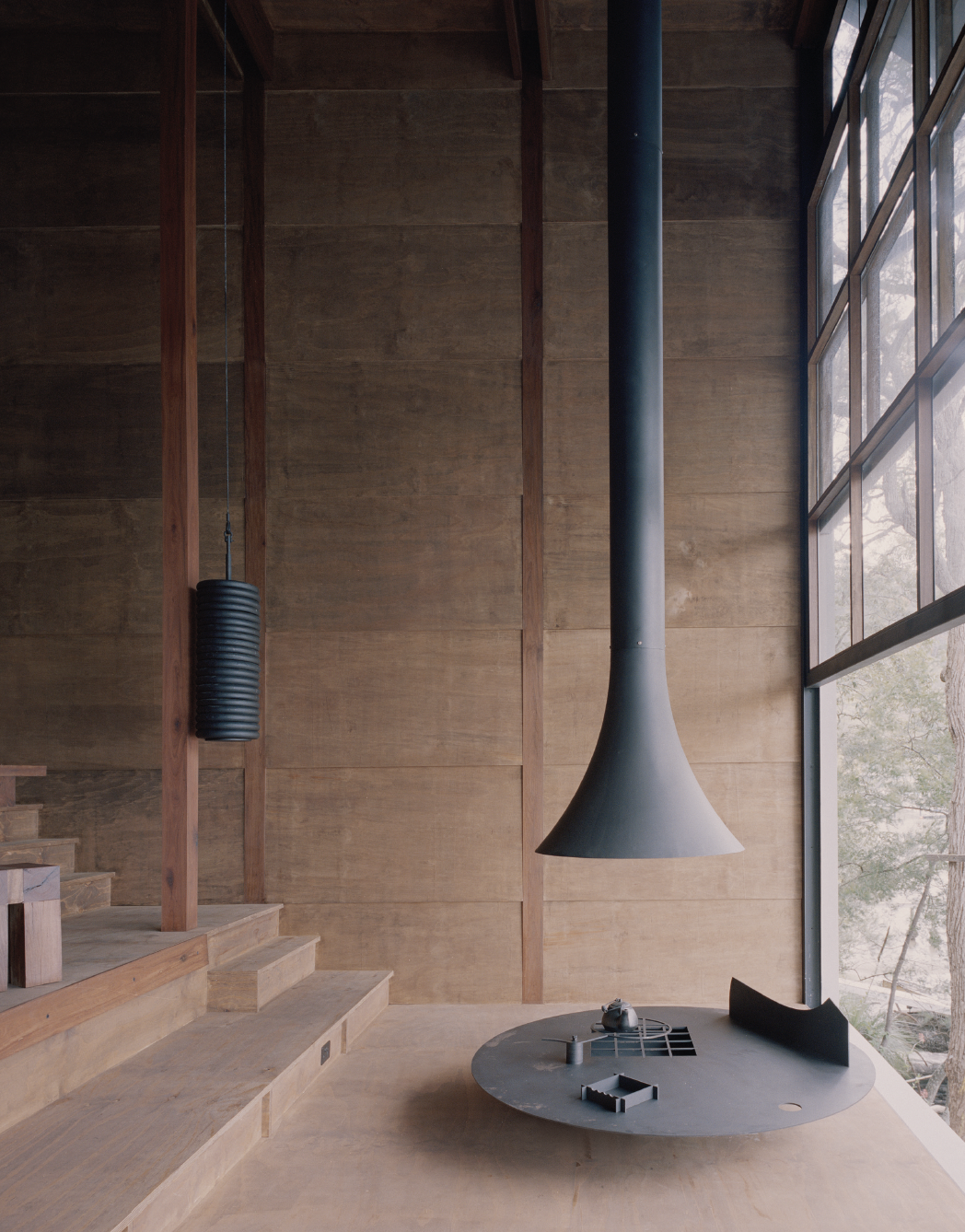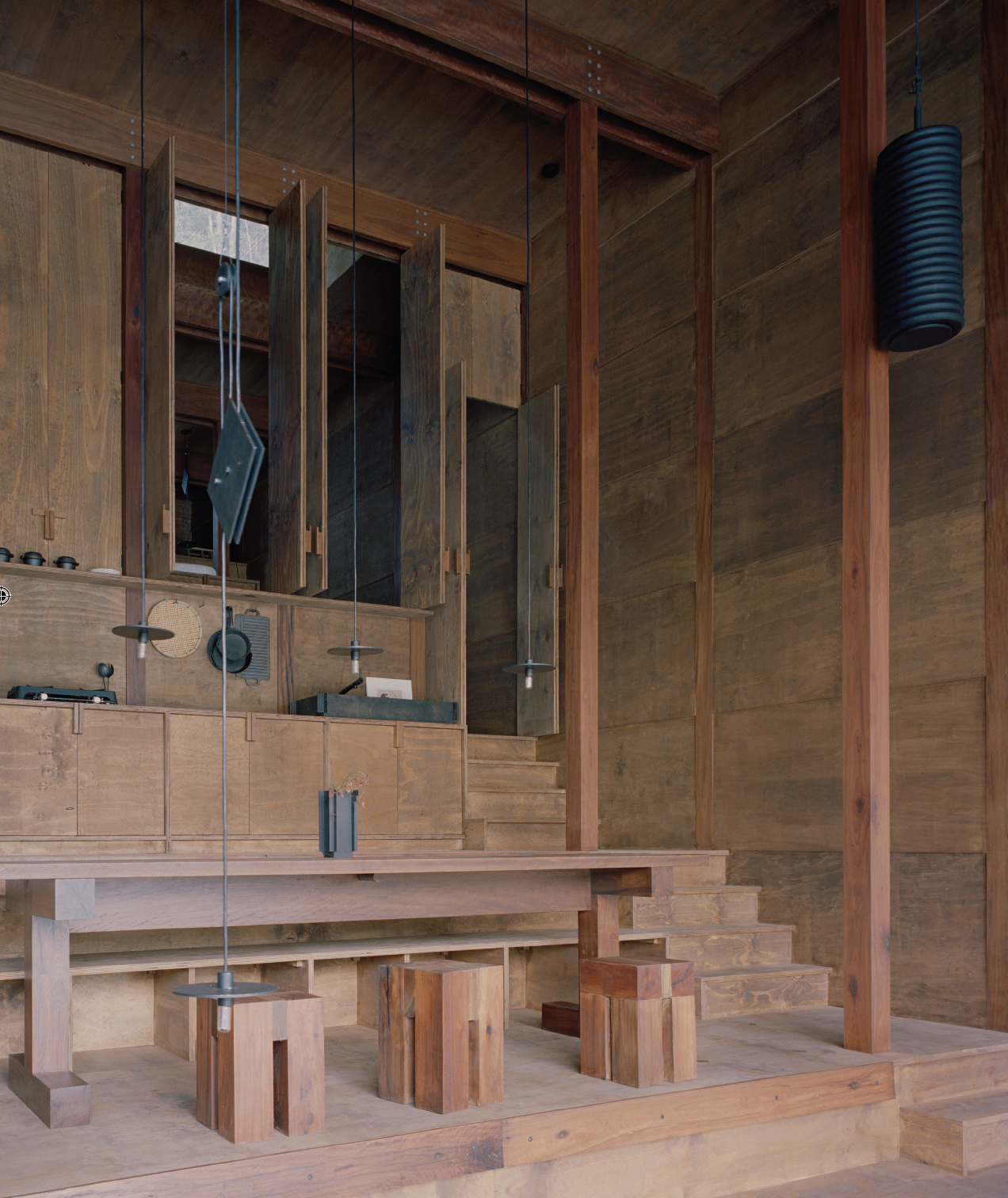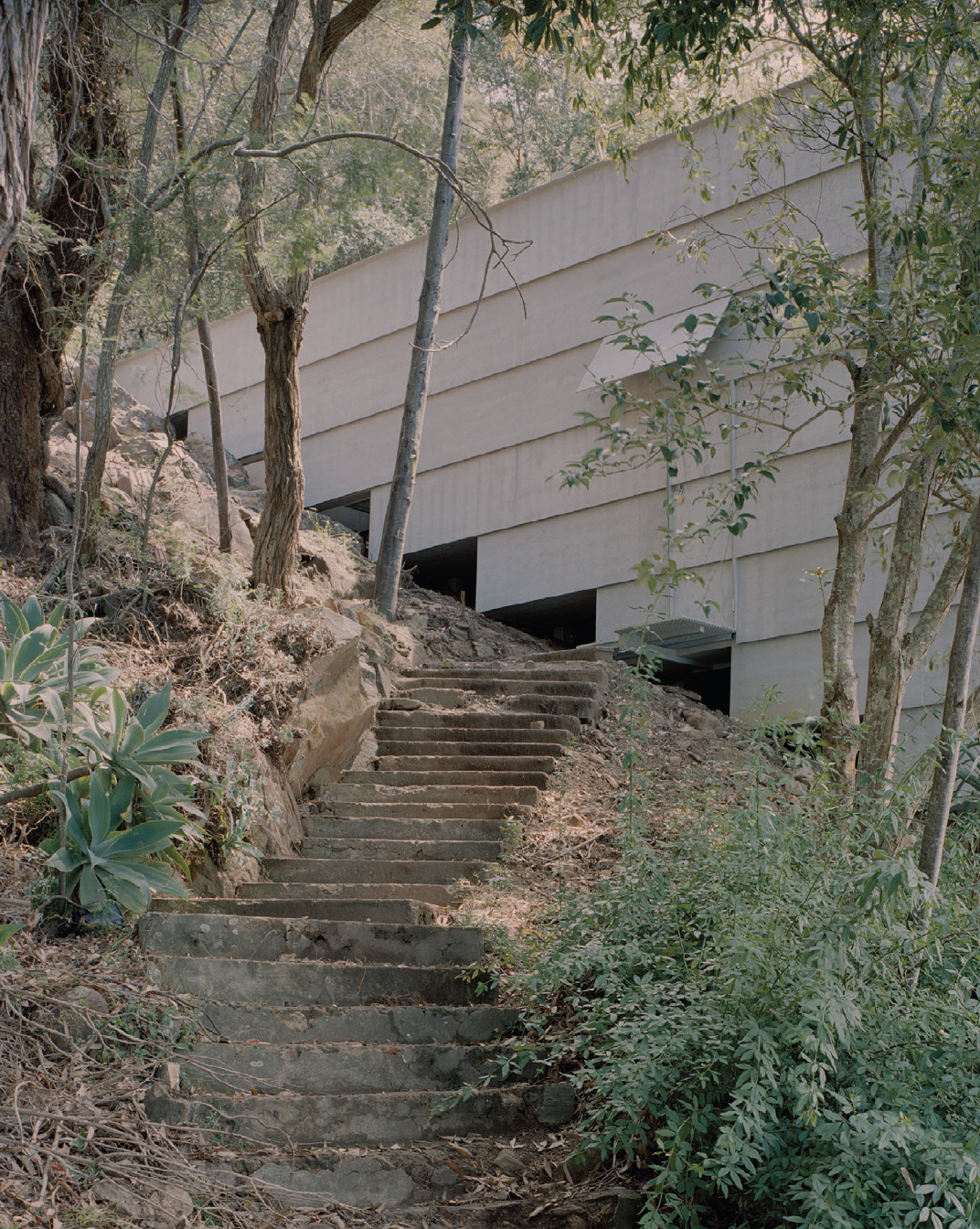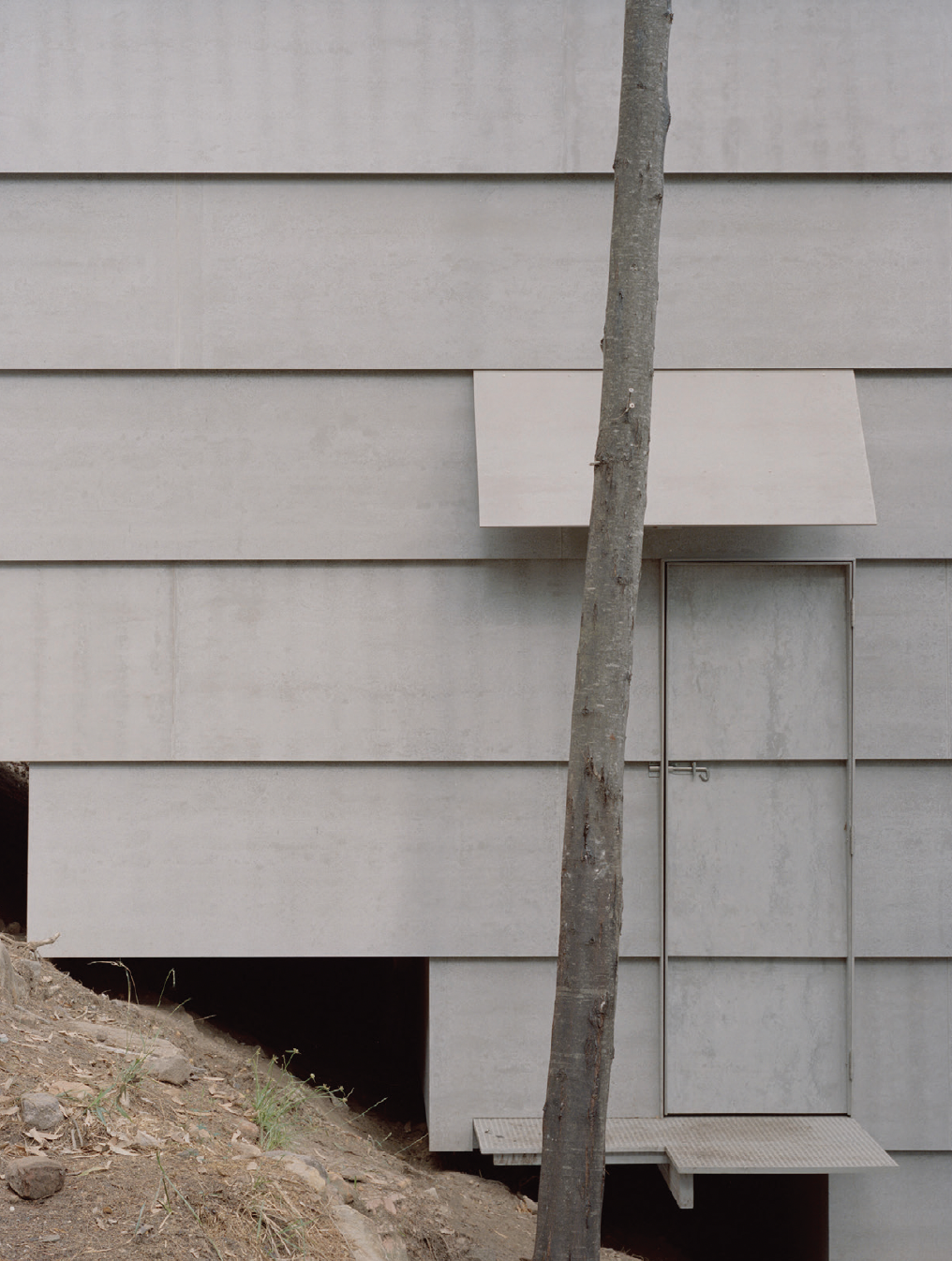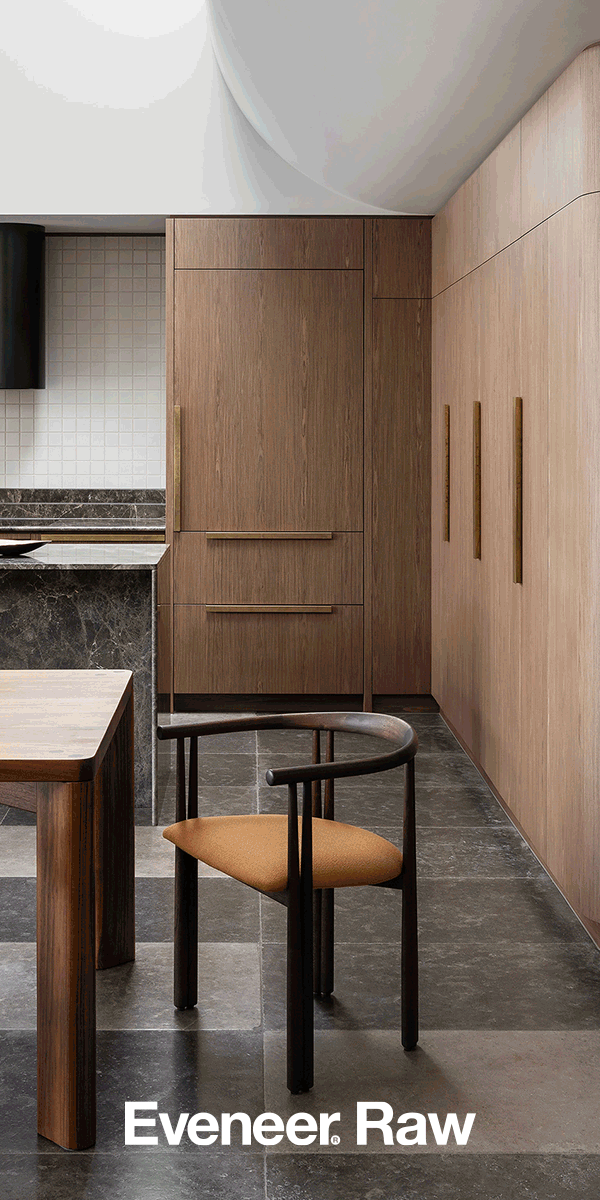Renowned for their longstanding collaborations with design visionaries such as the Eames Office and the ground-breaking Studio 7.5, Herman Miller has...
Tidal Access
Leopold Banchini’s first Australian project hovers in unplugged and off-grid splendour above an alluvial Walden. Through conversations with the architect and a visit to the site with builder Bruno Callanan, Union explores the exacting and topographically harmonious Marra Marra Shack.
Essay
Billy Maynard
Photography
Rory Gardiner
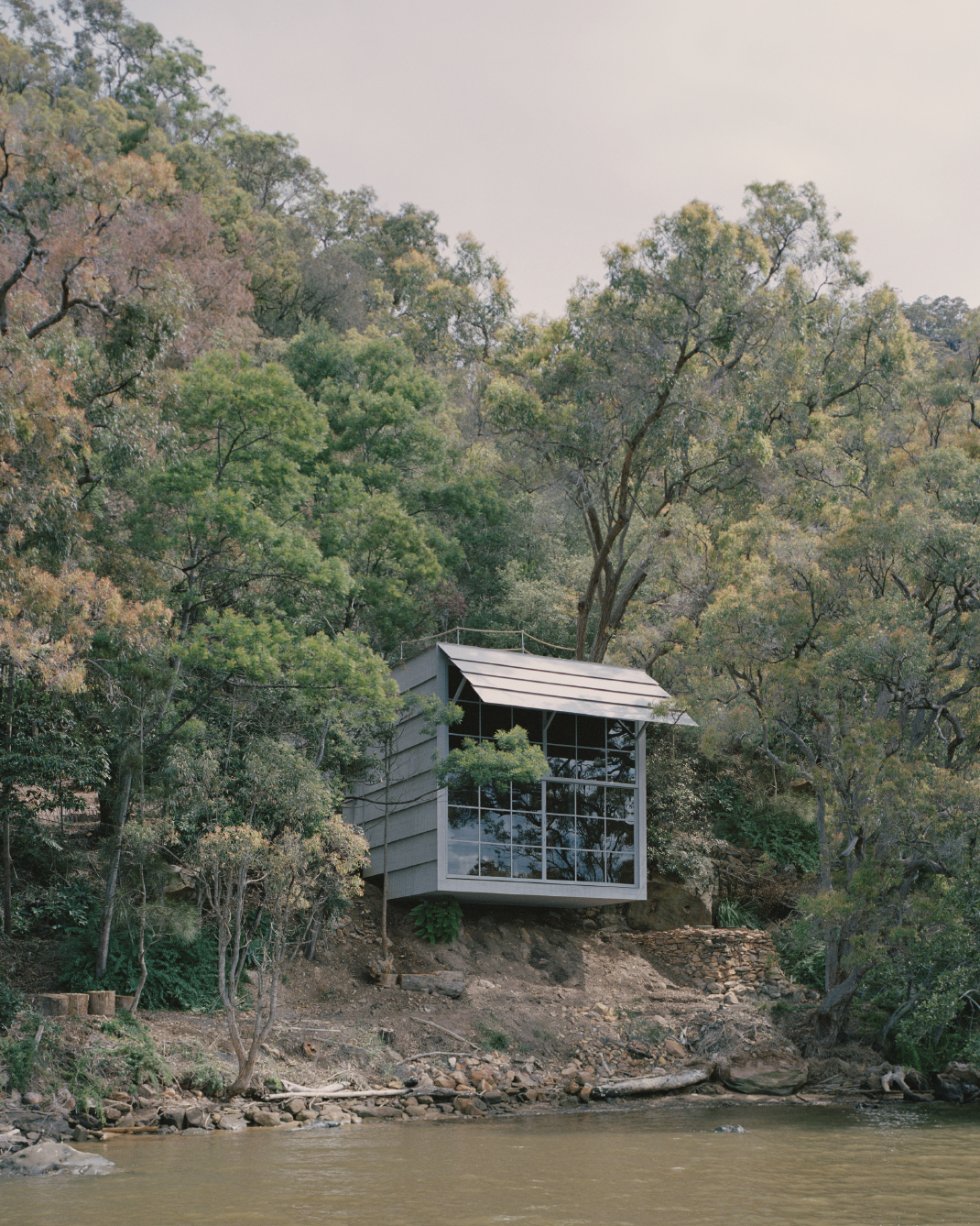
I meet builder Bruno Callanan at a boat ramp on Darug Country, where we begin our journey upstream to visit the site. With outboard humming, weaving to avoid jetsam, Bruno explains his love for the Hawkesbury River. His expertise with the tiller is evidence of nine months living in a nearby boat-only access community while working on the project. Past oyster leases, sandstone escarpments and through cardinal marks we travel. Bruno cuts the motor as the hull glides over a school of mullet, toward a jetty. From here the shack is visible through the mangroves. A façade of 36 square panes of glass welcomes us upon our arrival, reflecting the surrounding national park.
We climb spalling concrete sleepers cut into the hillside alongside fossilised fishing nets, brick terraces, beer bottle walls – detritus from years of occupation. From his home in Geneva, architect Leopold Banchini speaks to me of the importance of the existing. Temporality, superposition and creating leeway for indeterminate uses is key to understanding his approach to architecture. Approaching found conditions with curiosity, Banchini believes architectural situations are enriched by layers of histories, a reaction against industrial maxims of tabula rasa.
The steps stop at natural dirt landing, where a small fibreglass platform offers a place to transition into the hermetic house. Denuded of ornament, the building has an exacting and uncompromising façade. A monochromic strata of fibre sheet cement, clad as large horizontal shingles, suggests an analogous stepped section inside.
Each shingled tier terminates as the building advances uphill, acknowledging the relationship between material dimension and topography. One could be forgiven for mistaking the exterior for concrete, a material Banchini avoids using where he can. Privileging timber in most instances, the spans in his buildings are generally modest, assuming a human scale. He jokes that it had to be simple “as the plan was drawn in the sand one day at the beach!”
A door clad to match the façade sits below a small awning offset, carefully informal in its alignments. The architecture is austere and abstracted, positioning the building within a minimalist history. To this end, Banchini details the cladding as if it were a precious material, underscoring an ecological approach that flattens material hierarchies. This handsome use of fibro subverts a mainstay of the Australian vernacular, while fulfilling compliance on this bushfire-prone site.
Structure and surface are intimately linked to material histories. A leading recycled hardwood merchant milled decommissioned telegraph poles for the structural frame. The reuse of transmission infrastructure in an off-grid dwelling speaks to the architect’s commitment to de-growth as a model of practice – design for redistribution. Here, solar energy and water are collected on the patio roof. An aspirational platitude overprescribed to single-family country homes is that they ‘touch the earth lightly’. Here, impossibly small hand-dug footings are nonintrusive, with no cut or fill of the site required.
Once inside, the overwhelming impression is of being inside a lightcatching funnel. The interior reveals a sublime singular material treatise in eucalyptus – structure, linings, joinery and furniture. Like a cut geode, the project’s robust exterior belies a crafted interior; Banchini deftly balances material richness with asceticism. Northern light reflecting off the river dances on the plywood ceiling, revealing a luminous waxed surface and elevating the ubiquitous grade of plywood rarely used for internal finishes into something otherworldly. Dumbbell plates are fashioned to balance the counterweighted steel window, which opens the entire living space to the lake and bush beyond. Without a balustrade to mediate, the sense of connection to the river is more like being outside on a deck, providing an awareness of the circumstances of the moment – changing weather patterns, an oyster catcher on the mud flats, the arrival of a guest by boat.
The parti can be understood as one big, programmed staircase, spilling downhill, projecting north over the high tide mark. Along this staircase are platforms, each containing the essential requirements for dwelling.
Associations to the staging of domestic life are clear. Reinforcing this performativity is an interior elevation of operable panels. A 5.5 metre ceiling in the living room suggests a monumentality analogous to both the heightened reality of the theatre and to the scale of surrounding landscape. We discuss Kazuo Shinohara’s Sea Stairway (1971) house, a project of similar proportions that also ritualises domesticity, with staircases linking platforms and stages. Thematics explored in the early timber houses of Shinohara, before purging vernacular references in favour of formed concrete, are evident at Marra Marra Shack. Both architects’ work shares a nakedness. Shinohara composed sequences of naked structural moments, while Banchini designs assemblages of naked objects. Scattered throughout the project are a family of raw steel plate assemblages – locksets, pendants, vases, fireplace, sinks, heat mat. This tertiary design layer suggests a language of historical symbolism – the ziggurat, for instance. This is an overlay of personal mythos, linking ideas from the architect’s previous projects.
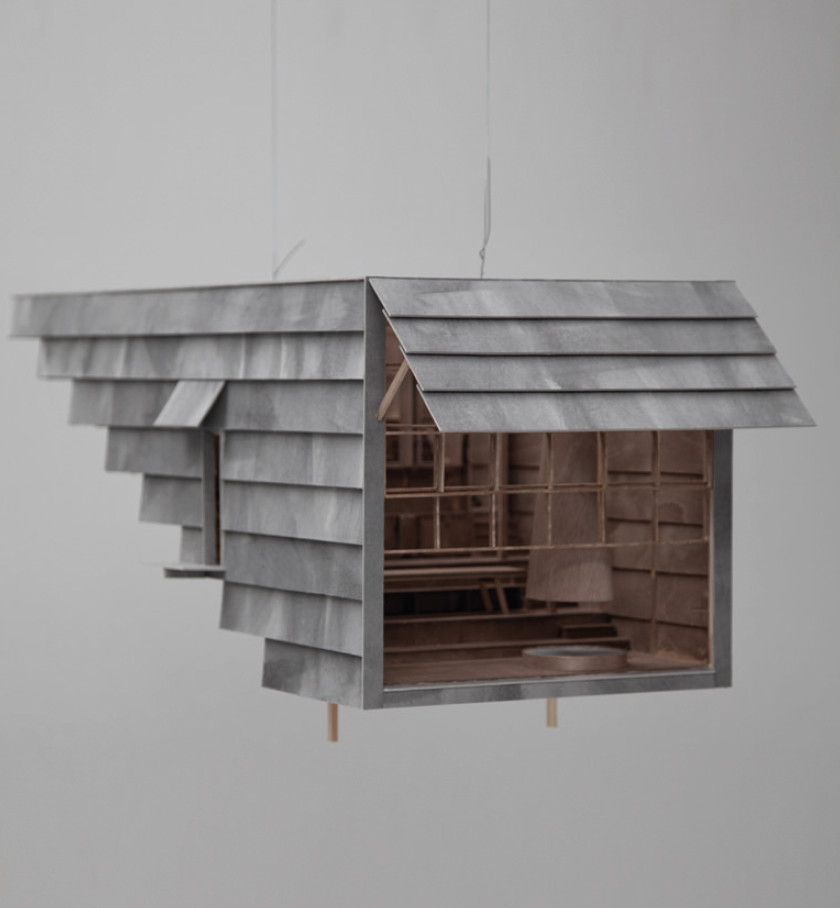
Yet unlike Shinohara, who typically favoured powerful spatial expressions over material and functional necessities, Banchini has made a house that works for his young family. In doing so he too questioned the basics of what a house really needs. Aside from an LPG bottle and camping burner, there are no appliances. Fetishising simple living is often a luxury reserved for weekenders. However, Banchini sees this house as a model for what full time residence could be – a sentiment proximate to the polemic of Richard Leplastrier, who lives a short boat ride away.
Banchini’s nomadic practice enjoys parallel streams of output. On the one hand, there is a growing body of domestic and public projects. On the other, Banchini engages, through research and building, with histories of countercultural architecture. He prefers timber frame systems, as opposed to continuous structures, noting that they are “better-suited to an economy of means, as well as my interest for a constructive expression that minimises effort and maximises the capacities of each element.”
Banchini calls for a re-evaluation of countercultural design as an avantgarde movement that instilled a certain ecological awareness into the mainstream. He takes the position that, whatever progress is made by his small houses, if it is to be repeated many times in other places it may just help to save the planet. This is a key theme explored in Shelter Cookbook (2021), a collaboration between Banchini and Lloyd Kahn, an 87-year-old builder, publisher, storyteller and former editor of Whole Earth Catalog. Marra Marra Shack typifies the translation of this research into practice, radically questioning classical notions of what, and where, domestic typologies can be. Put simply, the spatial implications of the plan compel a family to rethink how they may live.
Certain projects serve as a reminder that the power of architecture is independent of scale. Banchini has created something beautiful that gets well within reach of reconciling the many jobs this small object is tasked with, in as few moves as possible.
Later in the afternoon, Bruno suggests the tide is perfect for motoring back to reality
Featured in Union Issue 02.
